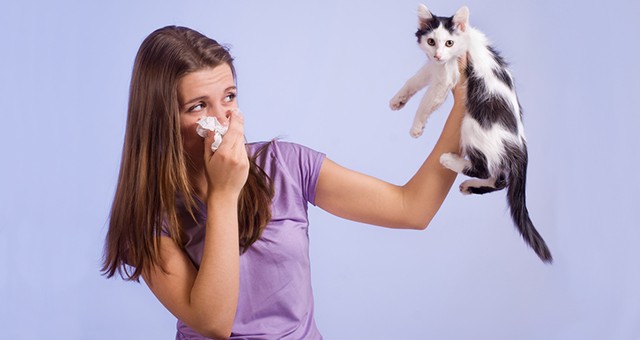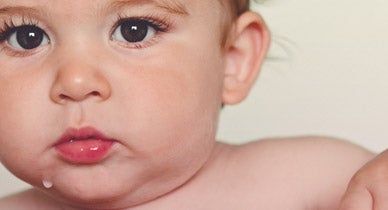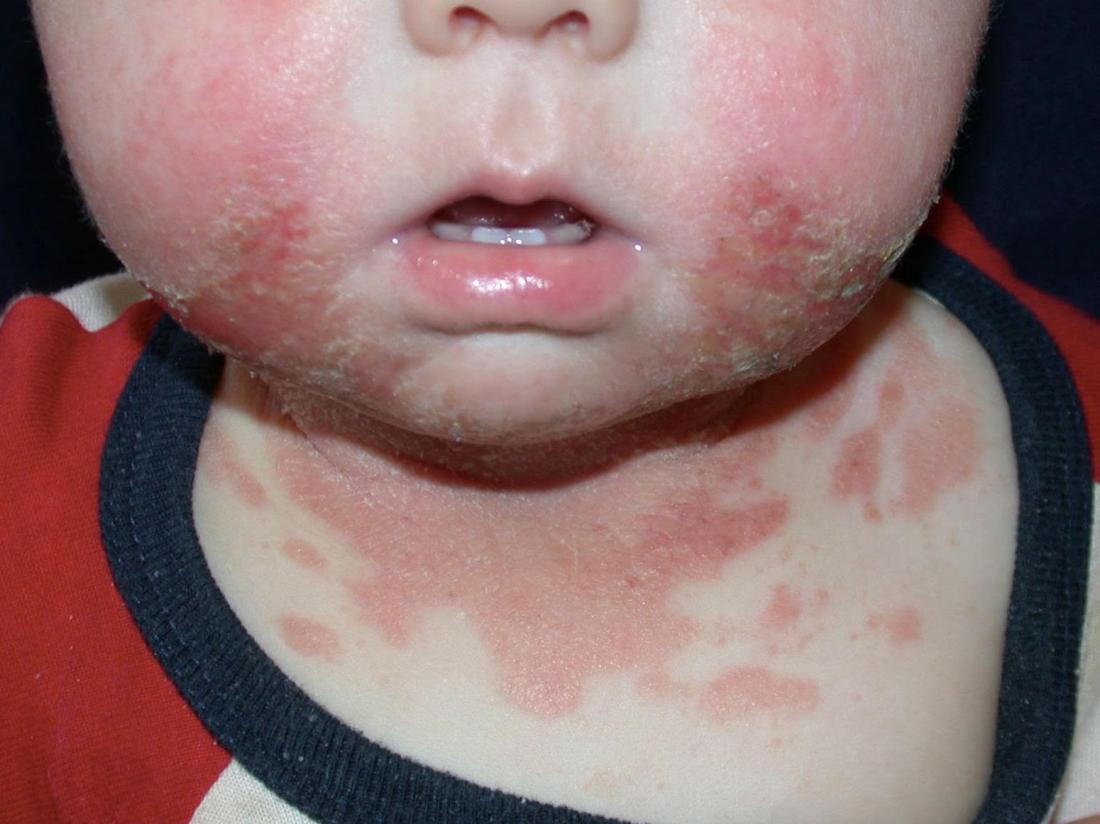Allergies to flea and other insects This kind of allergy is the most likely cause of a cat allergic reaction. Cats produce another major allergen Fel d 1 in the sebaceous glands of the skin and in their saliva.

How Do I Know If I Have Cat Allergies Poc
So does breast-feeding of infants.

Allergic reaction to cat saliva. These allergens are found on the fur and skin and in saliva. More than 90 percent of people allergic to cats have a sensitivity to a protein known as Fel d1 which is found in cat saliva feces and urine. In addition to nasal symptoms some people also may show signs of allergic contact dermatitis an immune system reaction that causes skin inflammation redness and irritation.
A cat allergy can contribute to constant allergy symptoms as exposure can occur at work school day care or in other indoor environments even if a cat is not present. When an allergic person comes into contact with cat saliva or dander the immune system reacts to protect the body by. When people with cat allergies are exposed to Fel d1 their immune system creates Y-shaped proteins called antibodies.
People with cat allergies react to specific substances that cats produce such as saliva skin flakes called dander or urine. People with cat allergies can be sensitive to proteins found in a cats dander. There are seven known cat allergens.
The major cat allergen is a protein called âœFel d 1â that is secreted primarily in the catâs saliva and skin and. Fel d 1 is deposited on the fur from sebaceous gland secretions and through saliva when cats lick themselves clean Mar 4 2007 4. Those who experience an allergic reaction to cats and pets have an over-sensitive immune system thats reacting to proteins found in pet urine saliva or dead skin cells known as pet dander.
Cat allergen is very small so it remains suspended in the air longer. There are multiple ways someone can come into contact with irritating pet allergens the substances that lead to. It is in fact a reaction to a protein found in feline saliva and oil glands in the skin.
Remember this basic fact about cat allergens. A cats saliva with the protein in it gets transferred onto their skin and coats. They are shed in saliva skin secretions and to some extent in urine.
Cats are fastidious groomersthey lick themselves all the time Paolillo says. Most people with cat allergies have an allergic reaction to a protein that is found in a cats saliva called Fel d 1. Its found in higher levels on male cats and is transferred to a cats fur during.
Avoidance of the allergen is the best treatment mode for any type of allergy. The Ohio State University College of Veterinary Medicine notes that most allergies stem from this protein which is passed on to the cats fur when the cat cleans herself. What Are Cat Allergens.
The commonest symptoms of cat allergy in humans are itching and burning in eyes sneezing itching and red rash on skin breathlessness tickling in throat etc. Hypoallergenic breeds are less likely to start in an allergic reaction as they produce fewer allergens than other cats. But most of the time cat allergies are triggered by a protein found in a cats saliva.
The cat allergen that over 90 percent of people with cat allergies react to comes from cat saliva and skin. Most often the allergic substance found is cats dander dead skin urine and the saliva. Because this protein is found in a cats saliva it can then cause an allergic reaction after they groom themselves groom other cats or spread allergens on rugs carpets or upholstered furniture.
Recent studies indicate that childhood exposure to cats may actually reduce the risk of allergic disease such as asthma. People with allergy to cats are particularly affected by cats dander or the protein Fel d 1 present in cat saliva. Cat Allergies and Hives.
Cats produce multiple allergens proteins that can cause allergy. Completely non-allergenic cats are tough to find low allergy or hypoallergenic cats are not. This protein gets transferred from the saliva to the dander and fur particularly around the cats face and neck.
Roseola is a very common childhood infection and causes a very high fever followed by a rash. Rhinitis can cause a runny nose post nasal drip and a scratchy throat.

Drool Rash How To Prevent And Treat It
Causes of excessive drooling in infants.

Does baby saliva cause a rash. Severe drooling needs deeper medical treatment. And with new teeth may come a lot more drool which can irritate sensitive baby skin and cause a rash. The excessive saliva can also lead to watery stools and diarrhea which will ultimately lead to diaper rashes due to frequent wetting and changing of undergarments in babies.
What causes drool rash. Drool rash also called lip lickers contact dermatitis is a form of eczema in which your babys saliva can irritate her skin and lips creating a rash around her mouth. Coxsackie virus infection can cause many cold-like symptoms as well as blisters on the mouth hands and feet.
The symptoms are usually worse when. Milk rash is another way to describe teething rash. As drool has saliva food bits and persistent wetness it disturbs the babys sensitive skin.
This type of rash can happen when your baby is drooling a lot because of teething. There is a digestive enzyme that is present in your babys saliva and when it comes into contact with their sensitive skin it causes irritation and a red raised rash. Excessive saliva around the babys mouth cheeks chin and beyond can irritate the skin and cause drool rash.
Drool rash also called lip lickers contact dermatitis is a form of eczema in which your babys saliva can irritate her skin and lips creating a rash around her mouth. Drool rash is a type of contact dermatitis caused by saliva. A drool rash can appear around the mouth and cheeks in the folds of your babys neck and on your babys chest as a result of too much saliva causing wet skin.
This is why its sometimes called a teething rash. Generally a drool rash appears on the babys skin that is caused by excessive saliva dropping. The consistently moist skin when rubbed against pillows toys or sheets due to friction and irritation can cause drool rash on the soft and tender baby skin.
The allergens in the saliva can cause rhinitis more commonly known as stuffy nose or nasal congestion. As the baby drools the saliva which is rich in digestive juices is always present on the babys skin. Sometimes the rash is referred to as a teething rash a lip lickers dermatitis or a.
Can Formula Cause Diaper Rash. The skin around your babys mouth andor chin may become inflamed and irritated when her own saliva dribbles down and stays on the skin for prolonged periods. Babies normally drool quite a lot hence causing teething rashes.
The extra saliva causes drool and when babies drink milk the two mix together. Usually switching to a soy-based formula or hypoallergenic formula will help. Saliva from excessive drooling can cause this rash.
Yes some baby formulas can cause a diaper rash. The rash might be more noticeable especially in. When this happens they get diarrhea as well.
When already irritated skin gets in touch with clothes and other such surfaces while playing hugging etc. This type of rash may happen when your baby is drooling a lot because of teething for example. It makes the skin red itchy and sometimes swollen too.
A teething rash is also caused by the moisture that gets trapped in the folds of their. Common irritants that can bother babys sensitive skin are saliva and drool poop baby wipes detergents soaps sunscreen and nickel. Drool rash is a type of contact dermatitis caused by saliva.
When a child has a milk allergy its common for them to get a diaper rash from the formula. Although not dangerous excessive salivation in babies can result in the emergence of discomfort causing skin rashes can even be a sign of more serious health problems in the baby. To prevent a rash under the babys skin or around the mouth you can use a cotton bib or maybe a handkerchief to wipe the drool.
Aseptic meningitis child Aseptic meningitis or viral meningitis can cause fever headaches neck pain nausea and more. Drool rash is not contagious and. Sometimes the rash is referred to as a teething rash a lip lickers dermatitis or a spit-up rash.
This is because it often occurs after your baby has been drinking milk. This is why some people call it teething rash. New baby teeth usually erupt from the gums between 6 to 24 months of age.
Drool rashes typically present as. This rash is usually due to babies not being able to digest the formula properly. The skin around your babys mouth andor chin may become inflamed and irritated when her own saliva dribbles down and stays on the skin for prolonged periods.
The scratchy throat could lead to temporary voice loss.